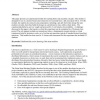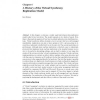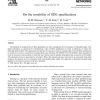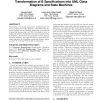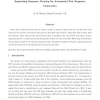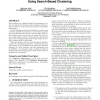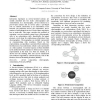135
Voted
IMC
2010
ACM
14 years 10 months ago
2010
ACM
3G cellular data networks have recently witnessed explosive growth. In this work, we focus on UMTS, one of the most popular 3G mobile communication technologies. Our work is the f...
126
Voted
FECS
2010
14 years 10 months ago
2010
: This paper presents an experimental module for teaching finite state machine concepts. This module is designed for use in a lecture-based course that does not currently have a la...
133
Voted
TCS
2010
14 years 11 months ago
2010
There has been much interest in testing from finite state machines (FSMs) as a result of their suitability for modelling or specifying state-based systems. Where there are multip...
164
click to vote
REPLICATION
2010
14 years 11 months ago
2010
In this chapter, we discuss a widely used fault-tolerant data replication model called virtual synchrony. The model responds to two kinds of needs. First, there is the practical qu...
86
Voted
JLP
2002
15 years 12 days ago
2002
State machines consume and process actions complementary to programs issuing actions. State machines maintain a state and reply with a boolean response to each action in their int...
101
click to vote
CN
2004
15 years 17 days ago
2004
The problem of testing from an SDL specification is often complicated by the presence of infeasible paths. This paper introduces an approach for transforming a class of SDL specif...
119
Voted
SAC
2006
ACM
15 years 19 days ago
2006
ACM
We propose a rule-based approach for transforming B abstract machines into UML diagrams. We believe that important insight into the structure underlying a B model can be gained by...
127
Voted
ASE
2006
15 years 24 days ago
2006
Finite state machines have been used to model a number of classes of system and there has thus been much interest in the automatic generation of test sequences from finite state m...
122
click to vote
GECCO
2010
Springer
15 years 27 days ago
2010
Springer
State machines are a popular method of representing a syshigh level of abstraction that enables developers to gain an overview of the system they represent and quickly understand ...
139
Voted
APCCM
2009
15 years 1 months ago
2009
Interaction topologies in service-oriented systems are usually classified into two styles: choreographies and orchestrations. In a choreography, services interact in a peer-to-pee...

